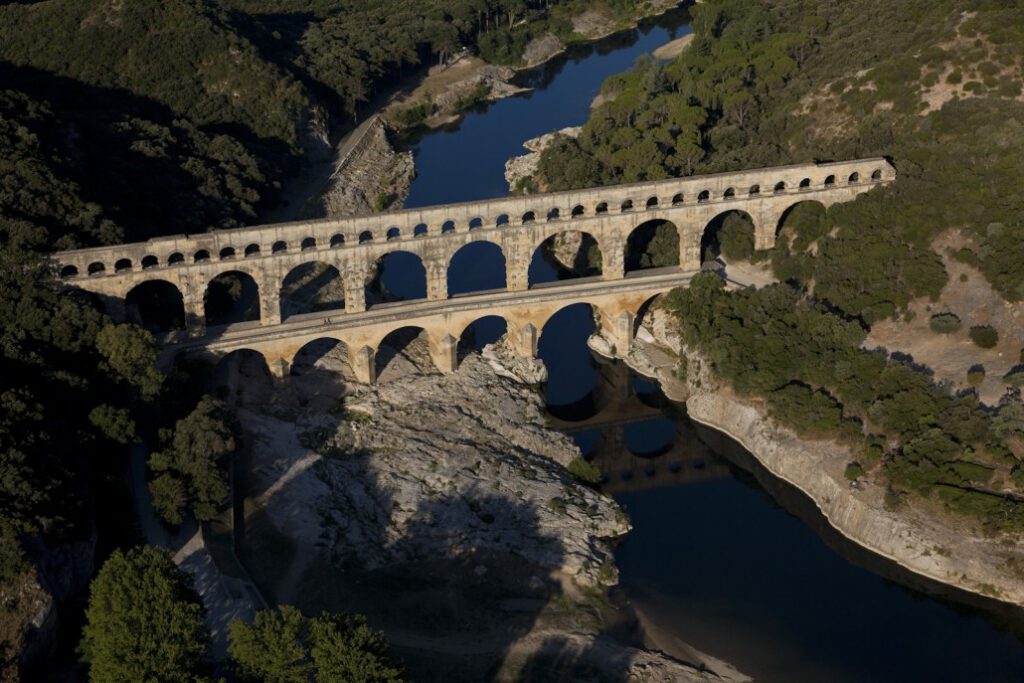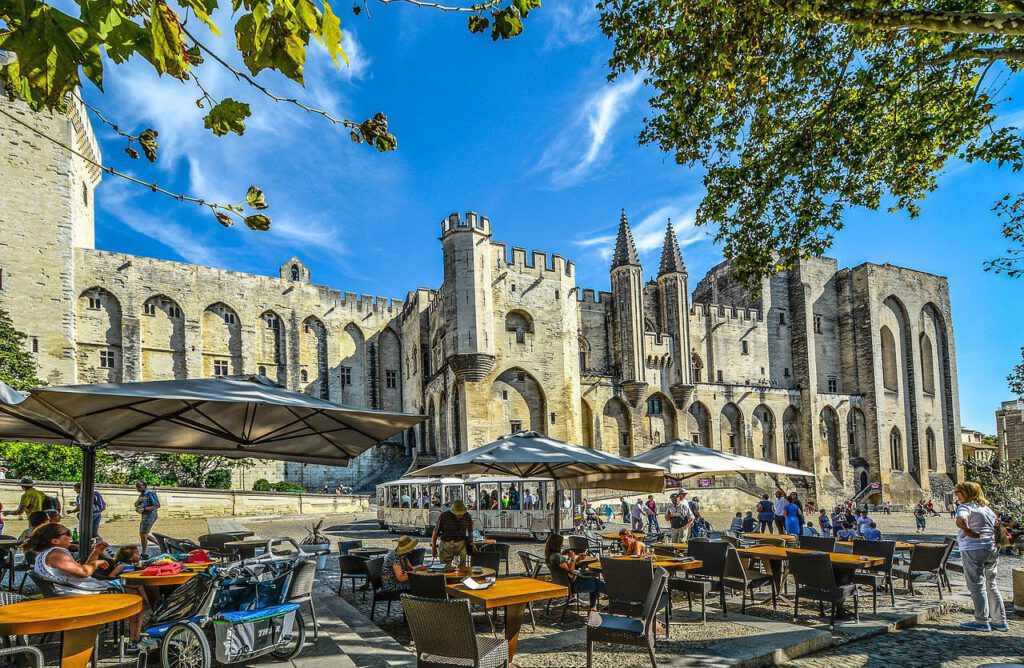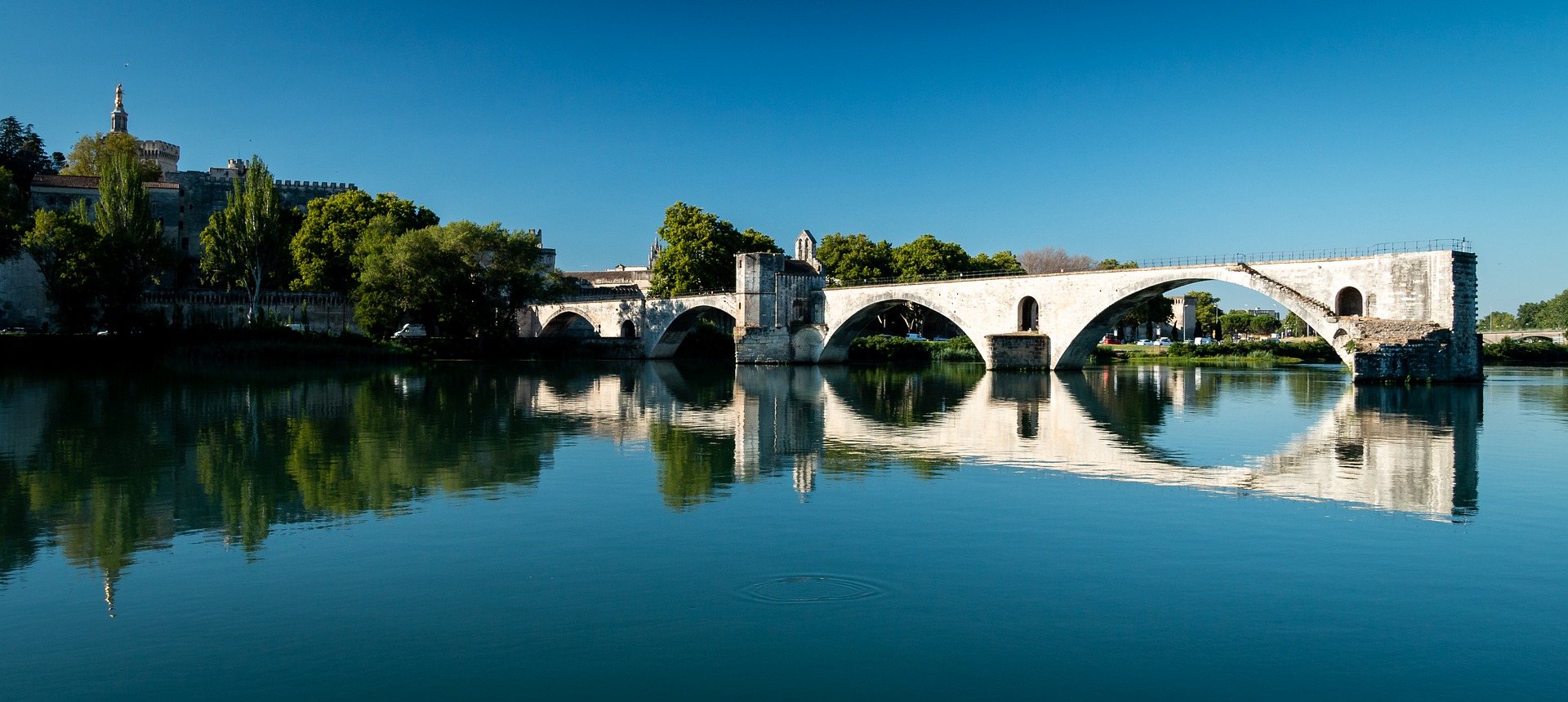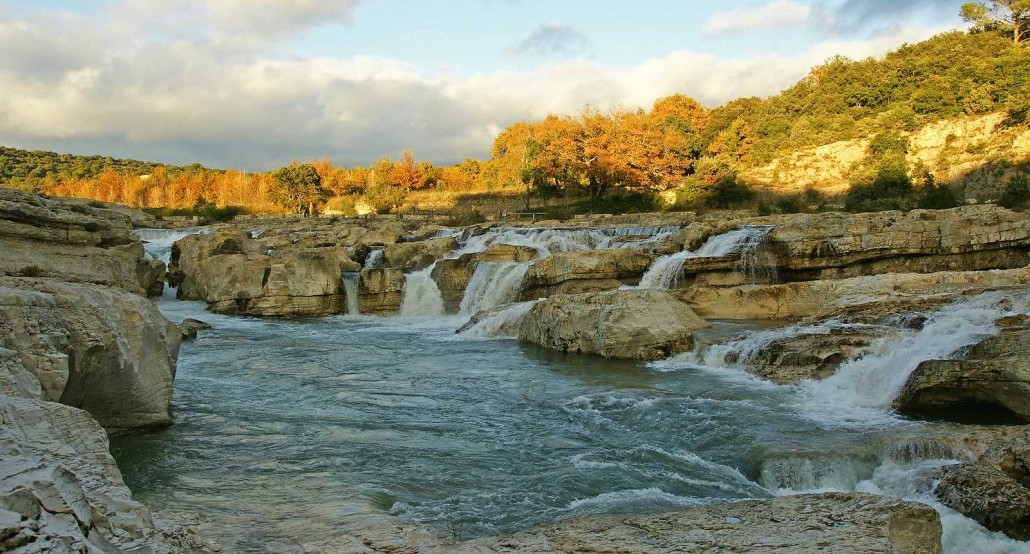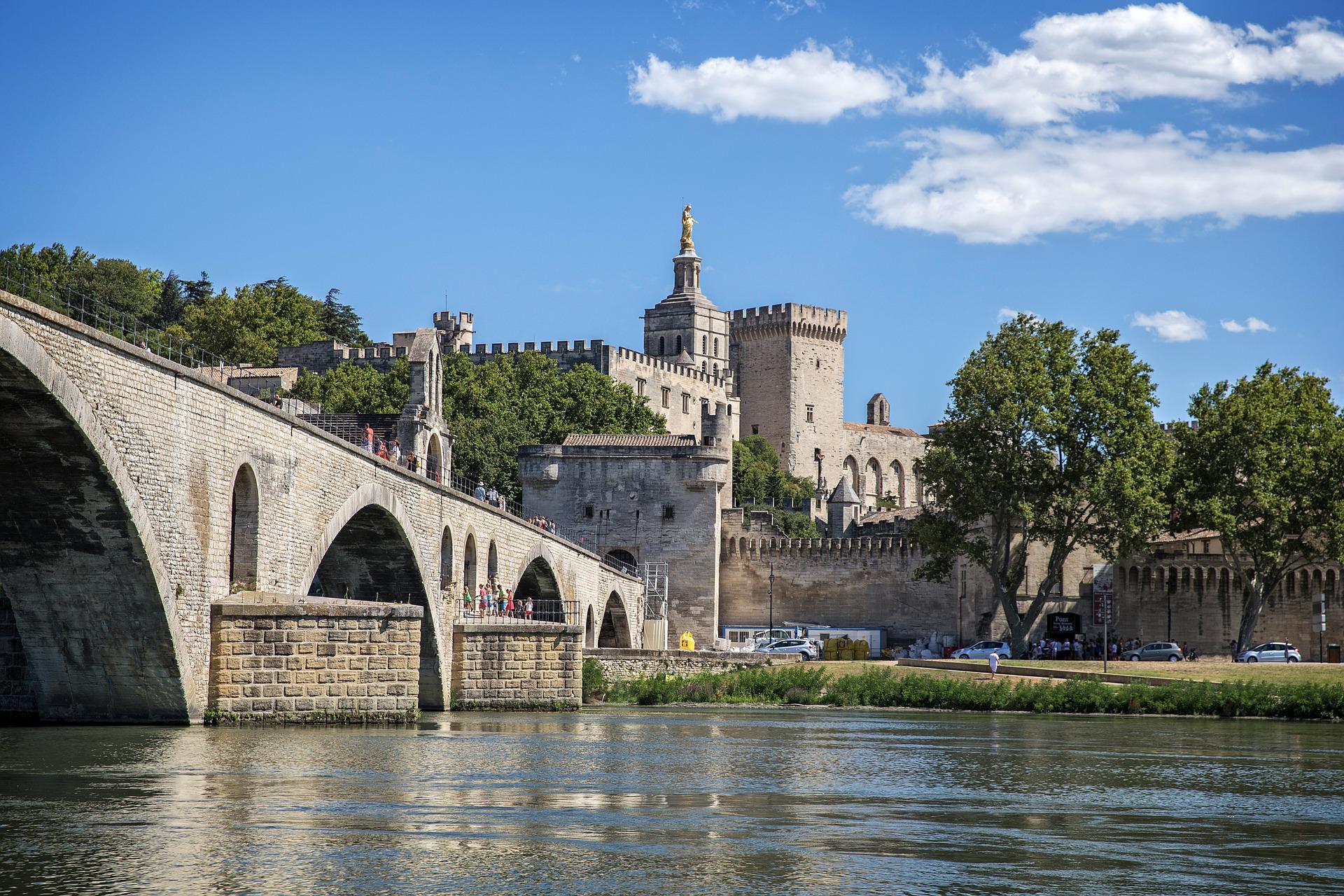
Le Pont du Gard
Le Pont Du Gard (25 kms south of Bagnols sur Cèze):
Located in the town of Vers-Pont Du Gard near Remoulins, the Pont du Gard is one of the best preserved remains of the Roman era. Built in the first century AD by the Romans, the Pont Du Gard is part of the entire water network that supplied the city of Nîmes from Uzès. Open every day, the site holds in its wing (left bank) a museum of 2500 m2 which first explains the water needs of a city like Nîmes, then little by little in a second phase of the transport of water to finish on the construction of the Roman building. The Pont du Gard site also hosts a toy library for children, allowing them to learn how to transport water through play.
Finally the site of the Pont Du Gard also welcomes you every evening for an illumination of the Pont du Gard.
Le Palais des Papes
Adress : Place du palais
Postcode : 84000
City : Avignon
Department : VAUCLUSE (84)
Country : France
The palace of the popes, in Avignon, is the largest of the Gothic constructions of the Middle Ages. Both fortress and palace, the pontifical residence was during the 14th century the seat of Western Christianity.
Le pont Saint Bénézet
Adress : Pont d’Avignon, Boulevard de la Ligne
Postcode : 84000
City : Avignon
Department : VAUCLUSE (84)
Country : France
The Saint-Bénézet bridge, commonly called the Avignon bridge outside of Avignon, is a bridge built from 1177 to 1185 on the Rhône, starting from the city of Avignon on the left bank.
Les Cascades du SAUTADET
Postcode : 30200
City : La Roque sur Cèze
Department : GARD (30)
Country : France
The waterfalls of Sautadet are a series of waterfalls and rapids located on the course of the Cèze, at the height of La Roque sur Cèze.
Formed by the erosion of river water on limestone rock, the Cascades du Sautadet are made up of 'pots' and 'cauldrons', circular-shaped cavities that can be up to 10 m deep.
The decorated cave of the Pont d'Arc, listed as a UNESCO World Heritage site
Lions, bears, mammoths, bison, horses emerge from the shadows, appear one after another on the limestone walls, sneaking between the cracks. A herd of horses gallops to meet the visitors. In the clay, footprints, from a child, hand marks.
“They came!”
Immense natural cathedral, inviolable for several tens of millennia, the decorated cave of the Pont d'Arc (known as Chauvet Cave) has retained an intact freshness. In Ardèche, at Vallon-Pont-d'Arc, along the Combe d'Estre, a few wing beats from the Pont d'Arc, time has stopped.
On 18 December 1994, three speleologists from Ardèche, Jean-Marie Chauvet, Eliette Brunel and Christian Hillaire released these paintings, these engravings, these traces forgotten for 36,000 years. The decorated cave of the Pont d'Arc (known as Grotte Chauvet) is the oldest decorated cavity currently known in the world.
This discovery revolutionized the world of archaeology and art history, due to the originality of the bestiary (14 animal species represented among the 425 figurations), the aesthetic quality, the techniques employed and the age of the works: some of the paintings that adorn the walls of the cavity were made 36,000 years ago.
To give an idea of the 'temporal vertigo', one must consider that as much time passed between Lascaux and us (about 18,000 years) as between Chauvet and Lascaux is still 18,000 years
In order to preserve this marvel, classified as a UNESCO World Heritage site, the decorated cave of the Pont d'Arc is not visitable.
On the other hand, a facsimile, the Pont d'Arc Cavern, opens its doors on April 25!
Les Gorges de l’Ardèche
Postcode : 07700
City : Saint Martin d’Ardèche
Department : Ardèche (07)
Country : France
Description : Carved out by the river: the Ardèche, the gorges of the Ardèche stretch from the famous natural bridge of Vallon-Pont-d'Arc to Saint Martin d'Ardèche, over thirty kilometers. Very popular with bikers, the Gorges de l'Ardèche can of course be done by car, on foot (along the Ardeche) or by kayak (recommended for 2 days).



